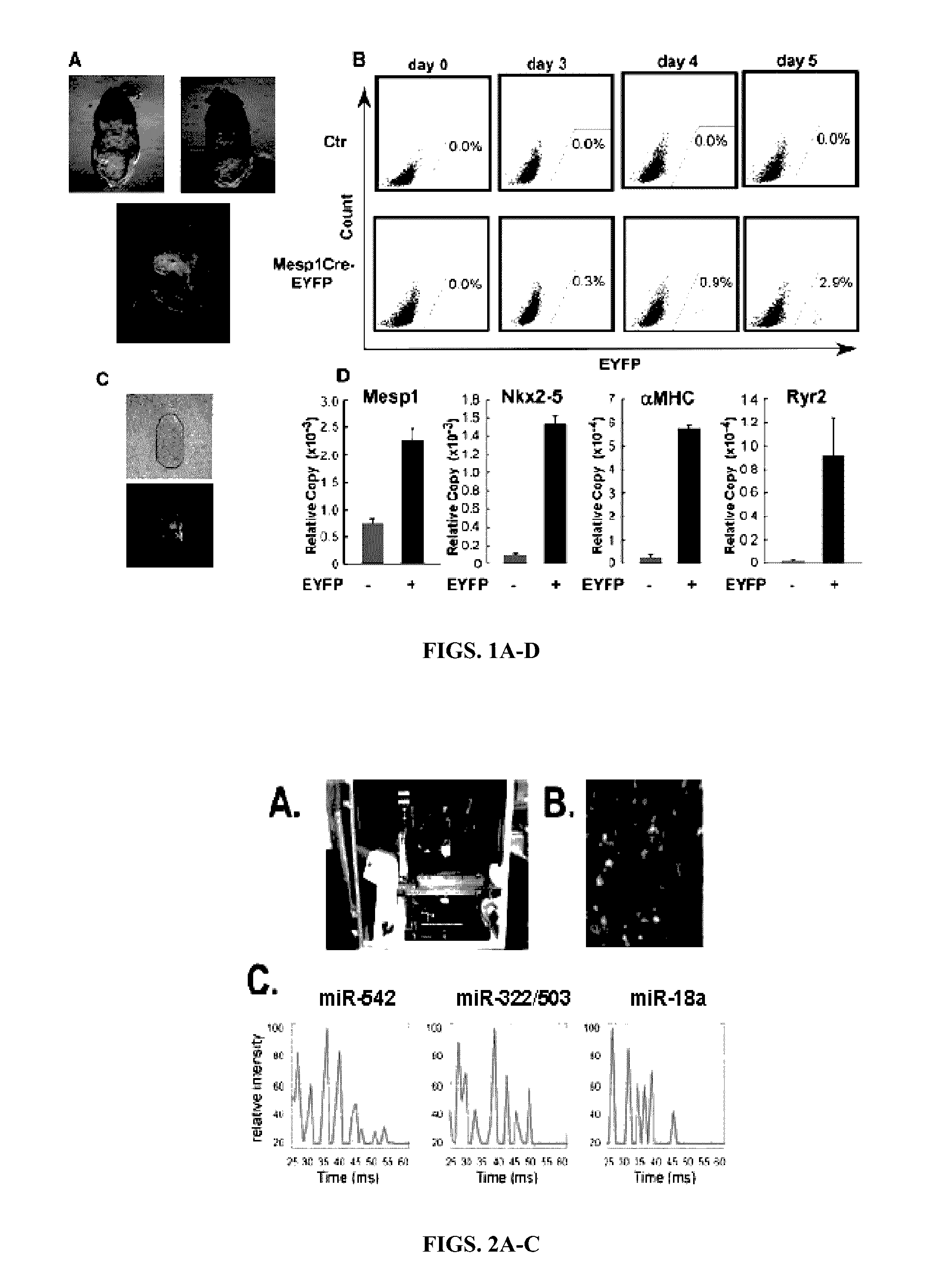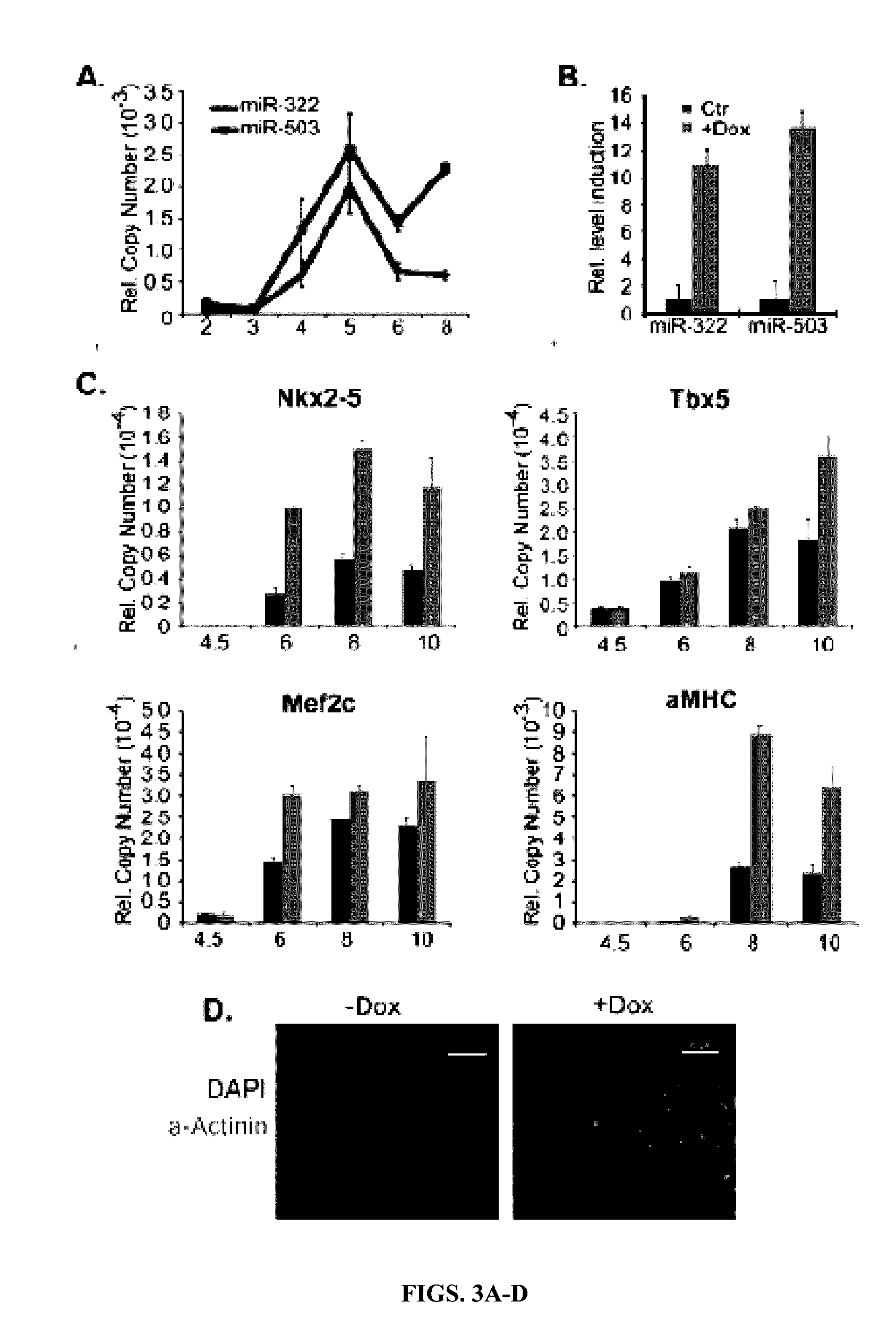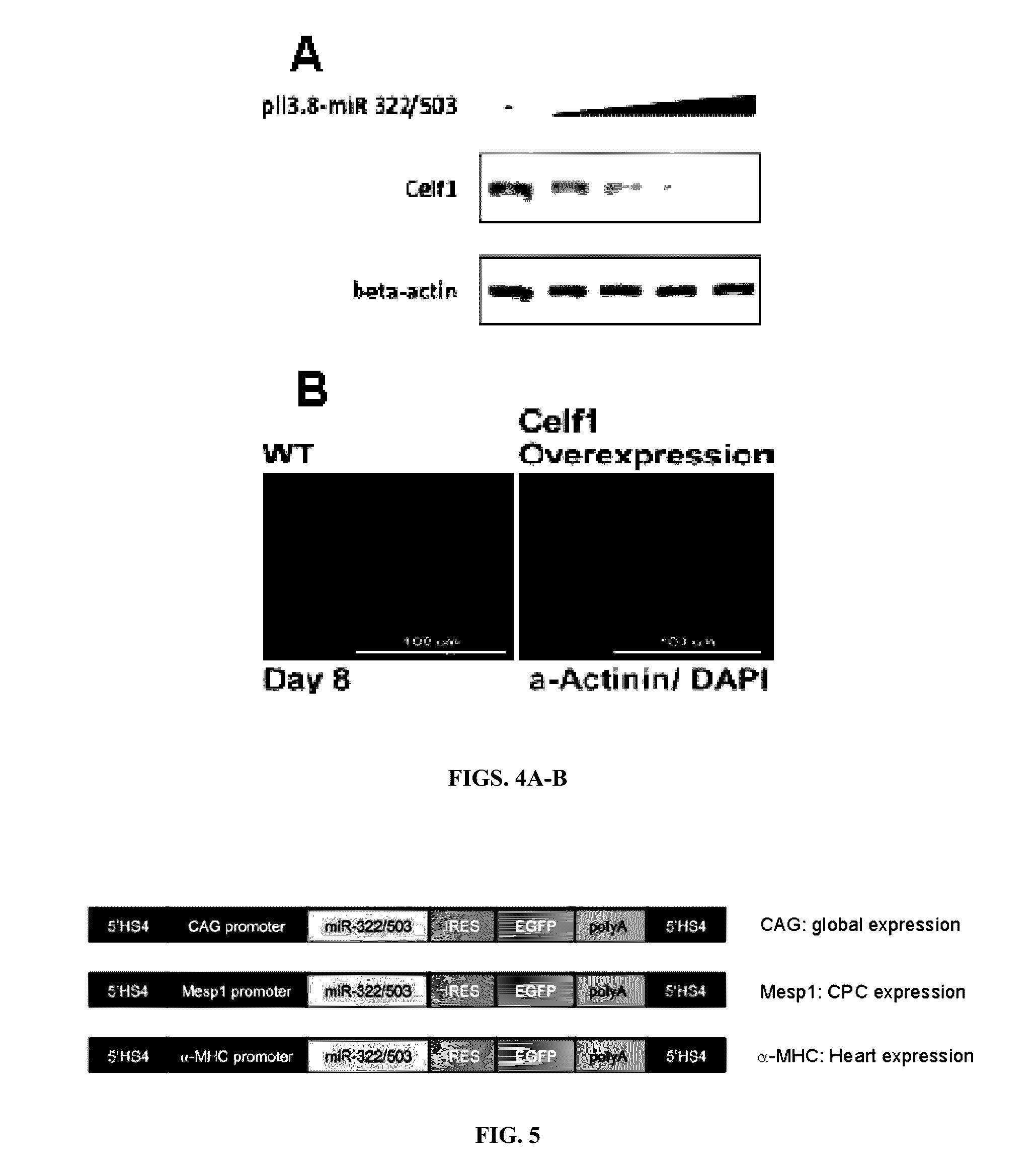Therapeutic mirnas for treating heart and skeletal muscle diseases
a technology of skeletal muscle and mirnas, which is applied in the field of genetic regulation and cellular physiology of cardiomyocytes and skeletal muscle cells, can solve the problems of heart failure, loss of pump function and heart failure, and limited donor availability, and achieve safe and effective delivery of several transcription factors. safe and effectiv
- Summary
- Abstract
- Description
- Claims
- Application Information
AI Technical Summary
Benefits of technology
Problems solved by technology
Method used
Image
Examples
example 1
Establishing ES Cell Lines to Track Early Cardiac Progenitor Cells
[0217]Given the undisputed importance of Mesp1 in cardiac development, the inventors started with building a system that traces the Mesp1-lineage of cells. Mouse strains Mesp1Cre / + and Rosa26EYFP / EYFP were crossed to produce the genotype Mesp1Cre / +:Rosa26EYFP / + FIG. 1A shows the distribution of Mesp1-lineage cells, which were previously determined to be the heart, dorsal aorta and intersomatic vessles (Saga et al., 2000 and Saga et al., 1999). With the conventional blastocyst isolation method, the inventors have established ES cell lines. In a standard embryoid body culture protocol, Mesp1Cre-driven YFP signal starts to appear at day 3 and peaks at day 5. At day 8, YFP signal colocalizes with spontaneous beating areas. Similarly, markers of cardiac development are highly enriched in the YFP(+) population. This cell culture model has several folds of advantage over others that mark / trace cardiac progenitors: (1) Mesp1 ...
PUM
 Login to View More
Login to View More Abstract
Description
Claims
Application Information
 Login to View More
Login to View More - R&D
- Intellectual Property
- Life Sciences
- Materials
- Tech Scout
- Unparalleled Data Quality
- Higher Quality Content
- 60% Fewer Hallucinations
Browse by: Latest US Patents, China's latest patents, Technical Efficacy Thesaurus, Application Domain, Technology Topic, Popular Technical Reports.
© 2025 PatSnap. All rights reserved.Legal|Privacy policy|Modern Slavery Act Transparency Statement|Sitemap|About US| Contact US: help@patsnap.com



